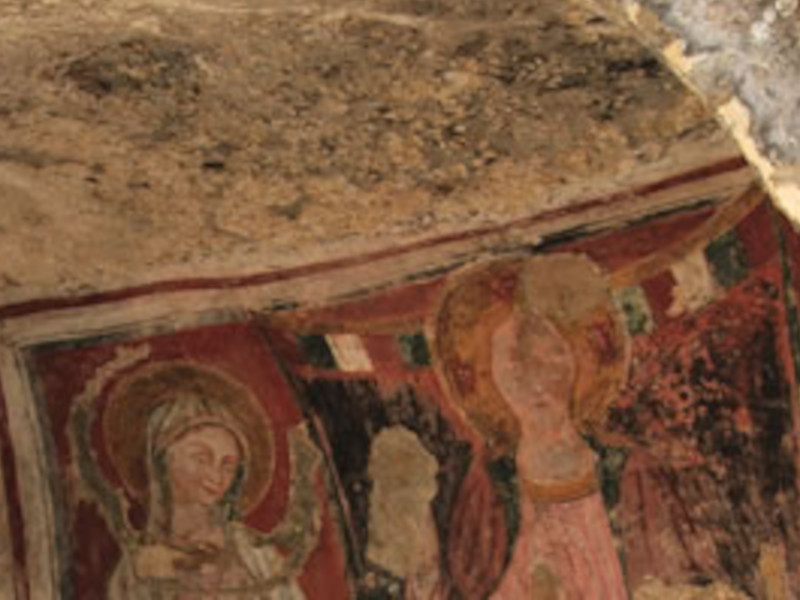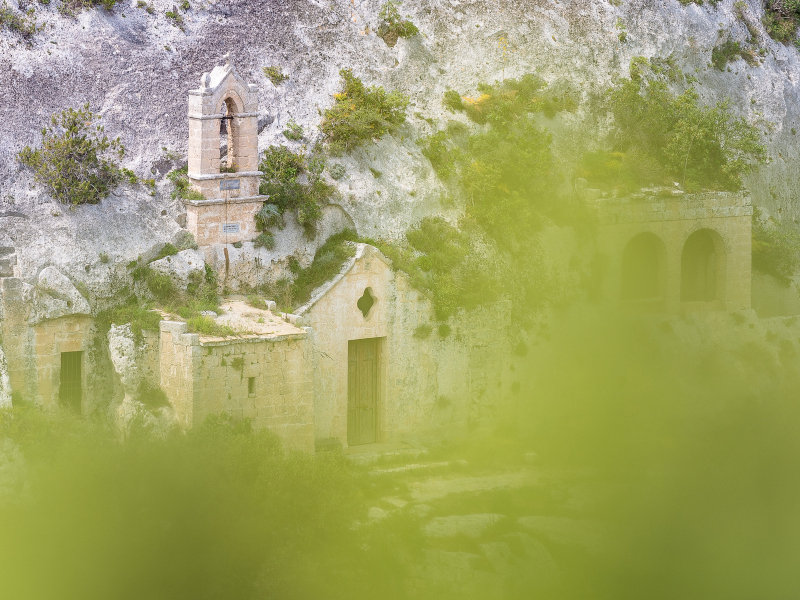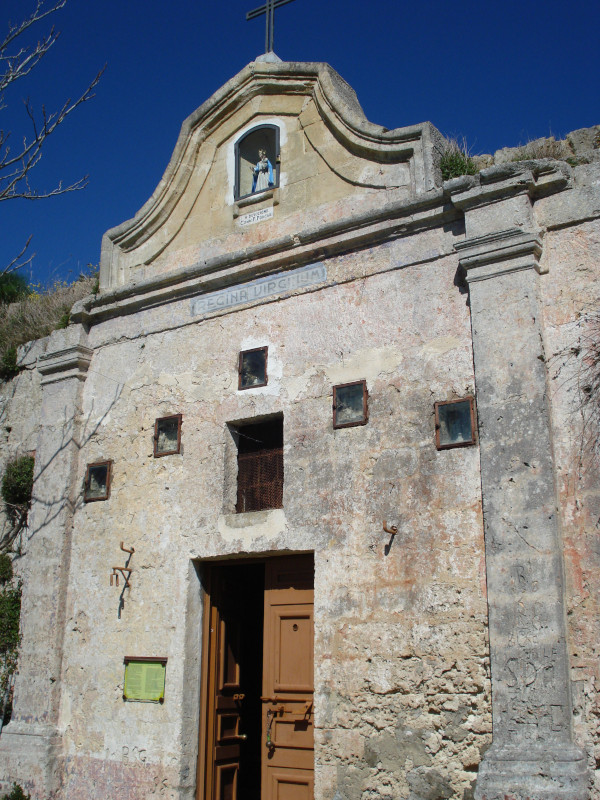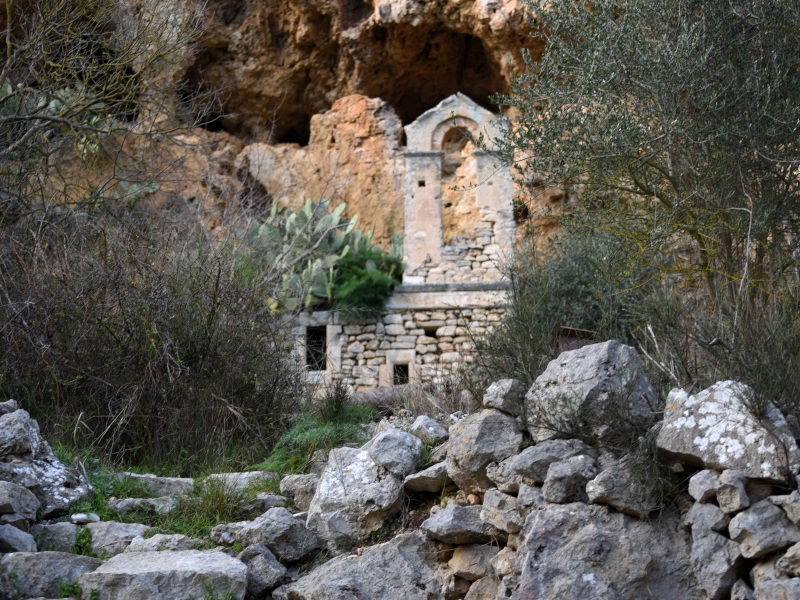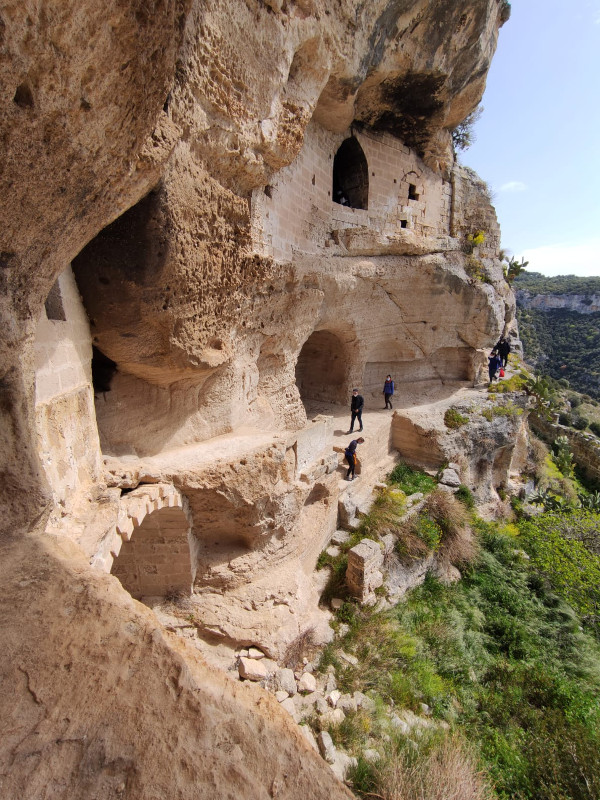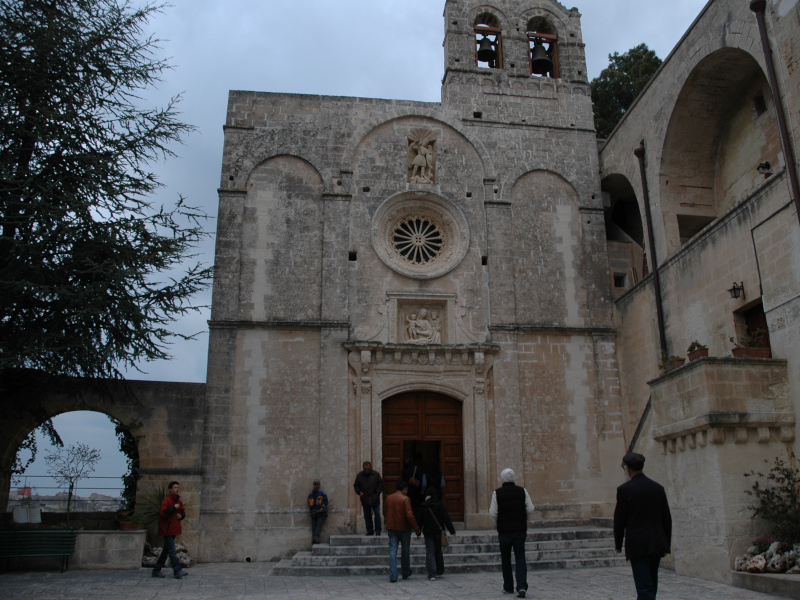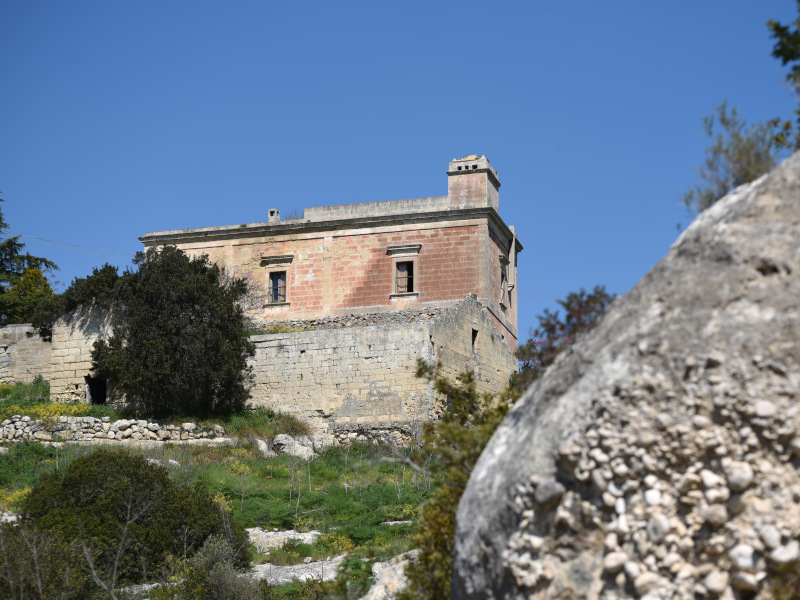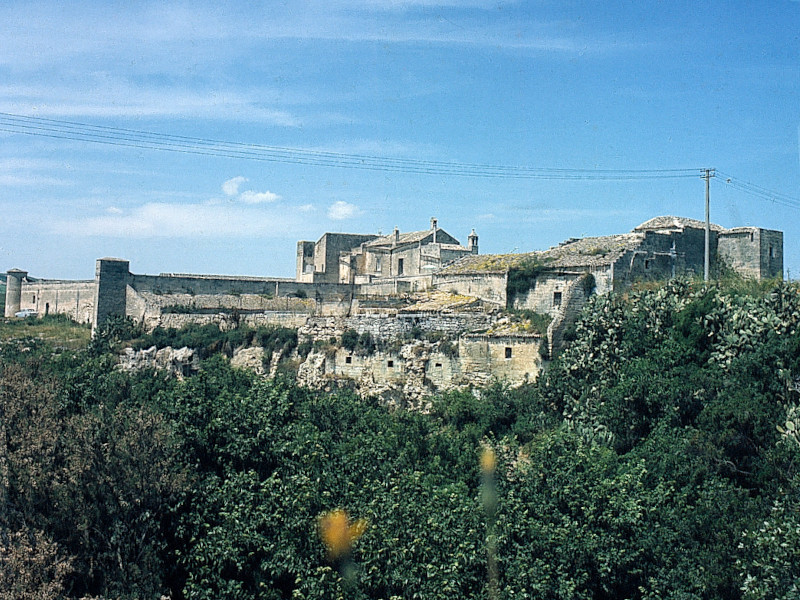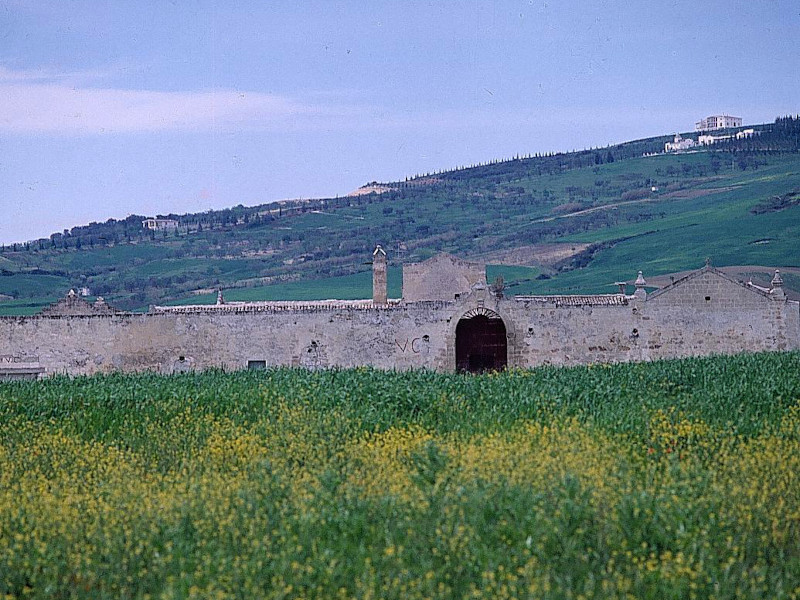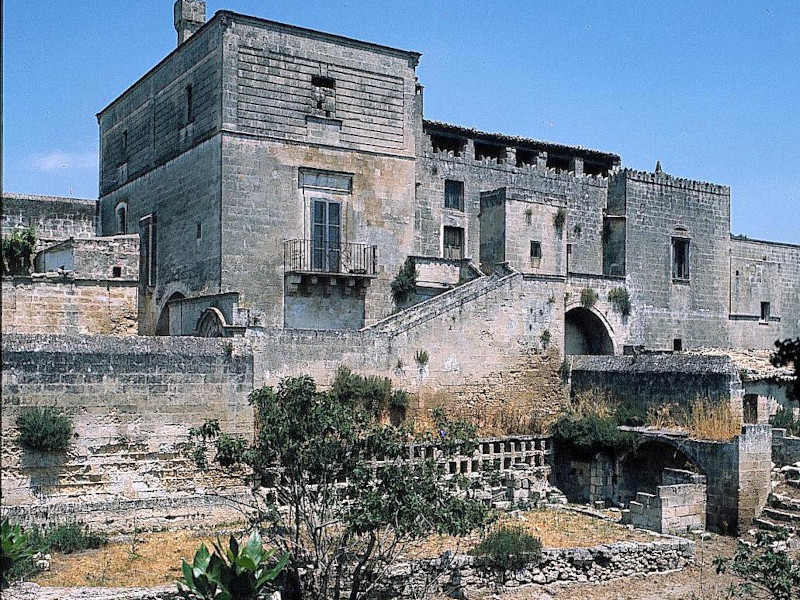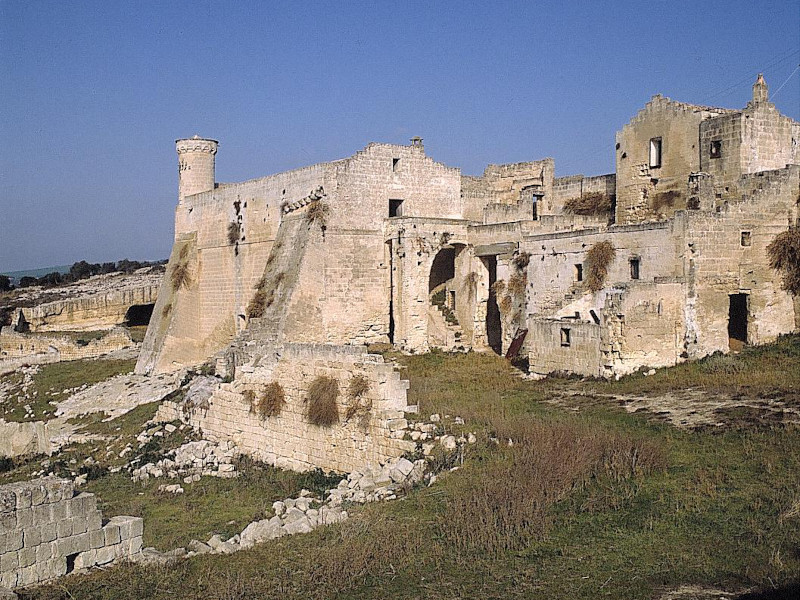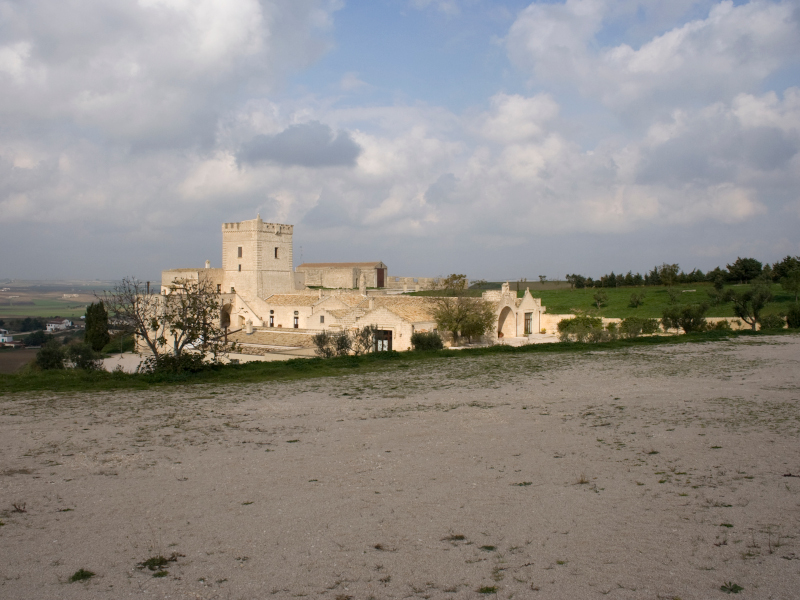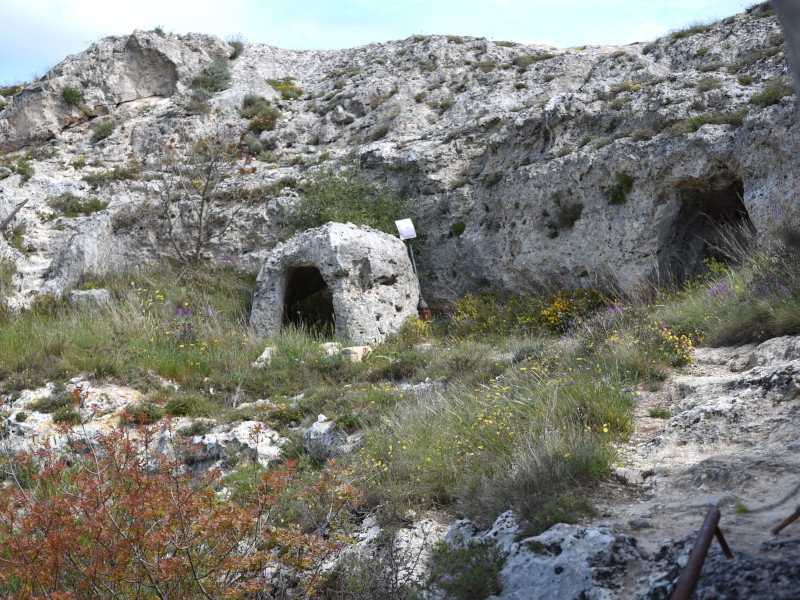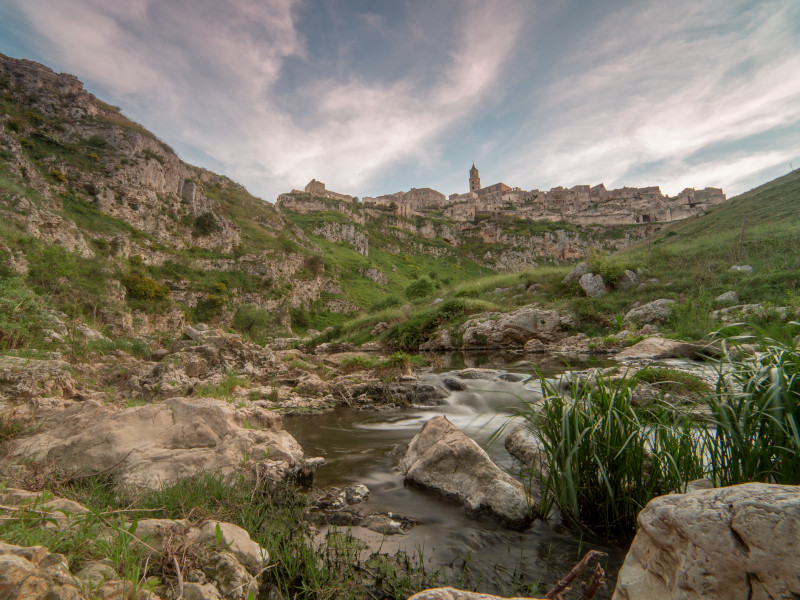Parco Archeologico Storico Naturale delle Chiese Rupestri del Materano
www.parcomurgia.itPoints of Interest
Man and Territory
Man has populated Murgia since prehistoric times, with settlements dating back to the Palaeolithic (Grotta dei pipistrelli - Bat Cave) and Neolithic periods (Murgecchia, Murgia Timone and Trasanello villages). Evidence of these phases is preserved at the "Domenico Ridola" National Museum in Matera, while evidence of the Greek period (8th-7th centuries BC) and the Roman period (from the 3rd century BC) is more numerous on the Montescaglioso slope.
The Rupestral Churches
The great number of Rupestral Churches in Matera and its surroundings is one of the most significant and spectacular features of the rupestral settlements in the area.
About one hundred and fifty worship sites from the early Middle Ages to the 19th century, deeply linked to all the historical, social, and religious stages of the territory. The most recent opinions of the critics, based on studies carried out on the sources, as well as on archeological and architectural data, talk about a very complex panorama released from an exclusively monastic and Byzantine context to which the phenomenon had been circumscribed by the first research activities dating back to the late 19th century.
Large farms
In the territory of Matera, the large farm has visibly embodied the authentic and ancient agrarian civilisation of large landed estates, representing the centre of a hierarchically imposed organisation that has remained unchanged over centuries.
An agrarian economy characterised by a fixed and casual workforce in a uniform cultivation system, based on alternating cereal and pasture. Extensive agriculture integrated with cattle and sheep farming linked to the transhumance towards the inland mountains of Lucania.
Sheepfolds and tanks
Herding has always been one of the most important productive components of the Murgia economy. This activity is linked to the first human settlements in this area and still characterises the Murgia landscape, with a dense network of artefacts and installations, some of which are very complex. Jazzi (sheep pens) and stables can be found on all the farms in the area: Torre Spagnola, Venusio, Del Monte, Malvezzi, S. Francesco, Monacelle.
Tuff Quarries
The "Tuff Quarries", the sign of man's far-reaching adaptation of the Murgia territory in Matera, are an example of a positive alteration that today has created places of high landscape value. The houses, churches, nineteenth-century palaces, Montescaglioso Abbey and the Sassi di Matera are symbols of the manual labour that has extracted calcarenite ashlars known as 'tufi' from the Murgia over the centuries. Calcarenite is a soft, carbonate sediment, yellowish white in colour, sometimes grey, with a grain size and degree of cementing that varies from place to place. It can be easily shaped, so much so that it was easy, even in prehistoric times, to extract it by hand from natural caves to better adapt it to human needs
The Sassi of Matera: World Heritage Site
Situated in front of the Parco delle Chiese Rupestri, the ancient quarters "Sassi" of Matera have been decleared in 1996 World Heritage by the UNESCO. The Sassi are made of 2 quarters: Caveoso and Barisano.
- Sasso Caveoso
A walk among houses, caves, water and snow reservoirs, cellars and narrow alleys in the most suggestive areas of the Sassi.
It is possible to visit: the Convicinio di S. Antonio, S. Lucia alle Malve, the Madonna dell'Idris, the house-cave of a labourer with furnishings of the 50s, the ancient cellars.
- Sasso Barisano
The route develops among neighbourhoods, 18th and 19th century palaces, and ancient squares, and it shows the first examples of integration between ancient places and modern activities. In the Barisano quarter the urban adventure of the town began with the recovery of the Sassi in 1986.
It is possible to visit: Piazza Vittorio Veneto, Sasso Barisano, Via Fiorentini, Piazza del sedile, Piazza Duomo, Cattedrale, Via Ridola.



